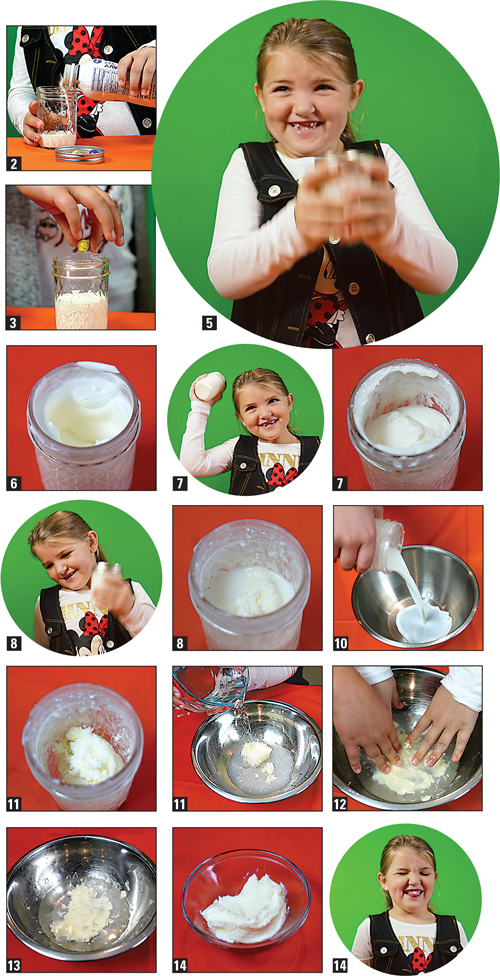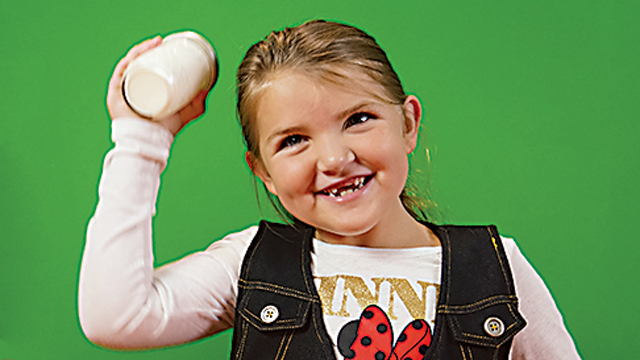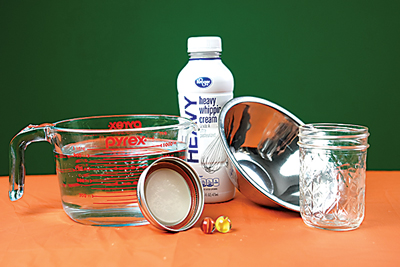Butter is a delicious treat we enjoy on a variety of foods, from biscuits to popcorn. But where does butter come from? How is it made? You can do the science at home, explore changes in matter, and discover how a few simple ingredients can come together to produce the tasty substance we know as butter.
What you need:
• One mason jar with lid
• Heavy whipping cream
• 2 marbles (optional)
• Empty cup or glass
• Medium-size bowl
• Ice water (four cups)
What you do:
1. Remove heavy whipping cream from the refrigerator about twenty-five minutes before starting the activity.
2. Fill the mason jar with one cup of heavy whipping cream. If using a smaller jar, make sure to have at least half the jar empty.
3. Add two marbles (optional, but it does help agitate the cream more quickly).
4. Make sure the lid to the jar is closed tightly.
5. Shake, shake, shake – and shake some more!
6. After about ten minutes, observe changes in the heavy whipping cream. (At this stage, you will have whipped cream.)
7. Continue shaking. (You should observe a solid mass forming in the jar.)
8. Shake some more (about another fifteen minutes), until you have both a solid and a liquid in your jar. The solid is butter, and the
liquid is leftover buttermilk.
9. Pour out the liquid buttermilk from your jar into an empty cup. (This buttermilk can be saved for cooking or tasting, or discarded.)
10. Pour your butter into a medium-size bowl.
11. Pour one cup of ice-cold water into the bowl.
12. Use your hands to knead the butter in the water. (The water should become cloudy with excess buttermilk.)
13. Pour out milky water. Repeat this process until your water remains clear and all the buttermilk has been rinsed out.
14. Your butter is ready to taste.

Take it further: Not all the butter we eat tastes the same. You can add things to your butter! Try adding salt, garlic, or fruit preserves. How does it change the taste? How does it change the speed in which the butter forms?
The Science: Heavy whipping cream is milk that contains quite a bit of fat. As you shake the jar, the fat molecules separate and stick to one another. As the molecules continue to adhere to each other, they release any trapped air and a solid is formed. The liquid buttermilk that is left is just the heavy whipping cream, minus the fat.





